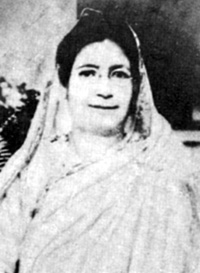Mapping female emancipation
autonomous womanhood vs. dasi
By rahnuma ahmed
In yesterday’s column, I had written that Bangladeshi scholars, researchers and intellectuals who have sought to understand and appreciate Begum Rokeya (1880-1932) have ignored issues of class and gender. Gender, too? you might well have wondered. Since Rokeya is a woman, how could any author who has written on Rokeya ignore the issue of gender?

Yes, gender as well, and to explain what I mean, I draw on an essay written by Marxist intellectual Farhad Mazhar, which, I hasten to add, is not about Rokeya but about Karl Marx’s theoretical attention to the question of women’s emancipation, ‘Narir Mukti o Shompotti: Itihash Bigyaner Moulik Obosthan Proshonge’, Women’s emancipation and property: The central position of scientific history (Proshongo: Nari Mukti Andolon, edited by Liakat Ali, Dhaka: Pothikrit Prokashoni, 1999).
In an otherwise brilliant essay, a couple of sentences by Mazhar in the opening paragraphs will surely not escape the attention of discerning scholars of women’s history. ‘Needless to say, the amount of work written by Karl Marx on ‘capital’ in no way equals the amount which he wrote on women. Women were not his subject. But does that mean that he lacked any original scientific thoughts on the issue of women? This is the central question that our essay engages with. In other words, our enquiry will be concerned with whether he did or did not have any original ideas on the issue of women, and that, whatever be the reason, these thoughts were not written down.’ (p. 80). Continue reading “RE-READING BEGUM ROKEYA ? PART II”
